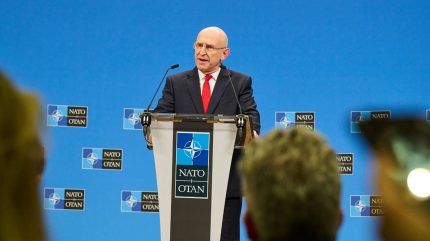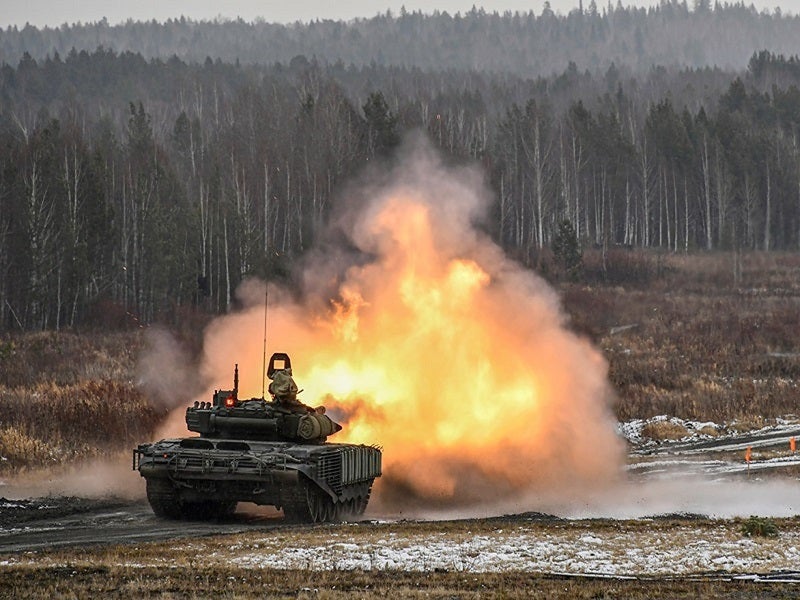
The UK announced another wave of military assistance to Ukraine’s Armed Forces valued at £150m ($187.5m) as the nation led its first Ukraine Defense Contact Group (UDCG) at Nato’s headquarters in Brussels, Belgium on 12 February 2025.
Comprising drones, tanks, and armoured vehicles, the British package will be delivered to Ukraine by the end of spring this year.
However, Britain’s show of solidarity with the wartorn country, embroiled in a war with Russia that approaches its third anniversary, has fallen under the radar. The aid went largely unnoticed being overshadowed by the new American position on Ukraine.
US steps back from Europe
The US Defense Secretary Pete Hegseth, taking a back seat in Brussels, delivered a hard line to his 50 counterparts that derided the “imbalanced relationship” in which he objected the United States’s leadership in propping up Ukraine’s chances against invading Russian forces.
This drama escalated when, that same day, US President Donald Trump revealed on his social media platform Truth that he and Russian President Vladimir Putin had called to enter negotiations for an end to the war in Ukraine, in which, the two had initially excluded Ukraine’s President, Volodymyr Zelenskyy.
Nevertheless, British – and European – aid continues to flow to Ukraine despite American disdain for the purportedly feeble efforts they make compared to the leader of the free world.

US Tariffs are shifting - will you react or anticipate?
Don’t let policy changes catch you off guard. Stay proactive with real-time data and expert analysis.
By GlobalDataModernised T-72
Among 50 armoured vehicles, one notable platform in the UK’s support package is the modenrised T-72 main battle tank. Although, the Ministry of Defence did not release details of the particular variant.
Currently, the most recent variant of the tank is the T-72B3M, also referred to as T-72B4, developed by the Russian Uralvagonzavod Research and production Corporation.

However, it is more likely that the UK will finance a developed capability for existing T-72 tanks from countries close to Ukraine, such as the Czech Republic or Poland.
These two countries are looking to replace the Soviet-era platforms with Leopard 2A4s and A8s respectively. According to GlobalData intelligence, this would involve advancing the T-72M1 or M4 main battle tanks, of which the Czech Republic have 119 and Poland 124 units.
It should be noted, however, that such ground platforms have become bait for drone warfare on the battlefields of Eastern Europe – no matter what manner of protection the vehicles may have. Loitering munitions, flown by First-Person View uncrewed aerial systems, are more mobile and manoeuvrable than oversized and costly tanks.
To counter this enduring weakness, the British Army recently revealed that they are trialling ‘cope cages’ on its Challenger 2 tanks. These tests are examining areas like vehicle function and sightlines, crew ingress and egress, stowage, and maintenance tasks. In addition, technical trials are ongoing to determine threat impact and implications to the host platform’s signature.
Cultivating commercial relations
On 13 February 2025, Nato Secretary-General Mark Rutte referred to the forthcoming peace negotiations, facilitated by the Trump administration, between Ukraine and Russia:
“We all want Ukraine to be in the best possible position when those talks start, to make sure that they can be concluded successfully. And as also Pete Hegseth said yesterday… it is crucial that whatever comes out of those talks, it is durable.”
What this durable peace might look like will likely be a point of contention in the Euro-Atlantic relationship. The US may be more ready to accept Russian conditions than their European partners, and certainly more so than Ukraine, an active participant in the war unwilling to be shoved out of the process.
For Europe, making Ukraine strong may involve bestowing, more than before, all its defence industrial might on Ukraine. This is a position taken up by Andriy Dovbenko, principal of the UK-Ukraine TechExchange.
“The UK, which has now been handed the reins for the [UDCG], focused on strengthening Ukraine’s security, must step up its efforts. And fast. However, Ukraine may represent both the challenge and the solution,” Dovbenko observed.
“We must improve commercial relationships with [Ukrainian] companies to ensure they survive beyond the war and can be used to protect civilians, government, and critical infrastructure much further afield than Ukraine.
“While Ukraine fights to save lives and secure the country’s future, it has also been building the future of the European defence industry, which must now be put into action by its allies.”
Additional reporting from Richard Thomas.



